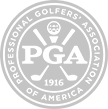Angle of Attack’s Role in How Far You Hit Your Driver

by Dr. T.J. Tomasi A Legacy Post by Keiser University College of Golf Senior Faculty and Director of Research (1940-2023)
TrackMan Technology
TrackMan technology allows golfers to improve their golf performance with data and feedback. Using patented Optically Enhanced Radar Tracking (OERT), TrackMan captures crucial details like ball flight, club path, and impact location with incredible accuracy. The data allows golfers to make adjustments to their game. Whether you’re practicing your drive or sharpening your wedge play, TrackMan helps with consistency and control.
How Does TrackMan Technology Work
As you probably know, TrackMan technology measures what the golf ball is doing from impact to the time it stops rolling. I employed the TrackMan for a study I presented at MIT with Dr. Jim Suttie. Part of the results showed that to hit the ball the farthest you can, you need just the right balance between your ball speed, launch angle, and spin rate, for example, how fast the ball is rotating around its axis as it flies. The key to maximizing distance is high launch and low spin, coupled with enough ball speed to optimize both.
The problem is that it is very difficult to increase your launch angle without also increasing the spin rate. Simply using a more lofted driver (say, switching from 10.5 degrees of loft to 12 degrees) will launch it higher, but with more spin — not good unless you have a low clubhead speed. The solution is to optimize your angle of attack and the steepness or shallowness of your swing. The best way to do this, of course, is to find a professional with TrackMan technology, but the good news is that because the angle of attack is part of your swing, you can change it without the technology — if you know how.
TrackMan Technology in Golf
Here is how the inventor of TrackMan, Fredrik Tuxen, describes the effect of launch angle: “If you have a 90 mph clubhead speed with an attack angle of minus 5 degrees (hitting down on the ball), your optimal launch angle/spin rate is around 10 degrees and 3,100 rpm…On the other hand, if your attack angle is plus 5 degrees (hitting up on the ball) with the same 90 mph clubhead speed, your optimal launch angle/spin rate changes to 16 degrees and 2,200 rpm.” And here is the big deal: “This last combination will carry the ball almost 30 yards farther than the minus 5-degree negative attack angle.”
What Is the Angle of Attack in Golf
Angle of attack (AoA) is the vertical path your club takes as it moves through impact, influencing ball flight, spin, and overall consistency. A steeper angle of attack promotes a downward strike, ideal for crisp iron shots, while a shallower angle helps maximize distance with the driver. To adjust your AoA, focus on ball position, weight distribution, and swing path. Moving the ball slightly forward in your stance can shallow your angle for a higher launch, while positioning it back encourages a steeper descent for better compression. Training with alignment sticks, impact bags, or technology like TrackMan can provide real-time feedback to refine your approach. Perfecting your angle of attack leads to improved ball striking, greater control, and optimized distance. By making small adjustments you’ll develop a more consistent swing that improves your game on the course.
Key Aspect of the Angle of Attack
Measurement: Attack angle is measured in degrees. The clubhead is moving upwards (positive angle), downwards (negative angle), or horizontally (neutral angle) as it strikes the ball.
Impact on the shot: A steeper or higher attack angle creates more spin and a higher ball trajectory or launch angle, while a lower or shallower attack angle produces less spin and a lower trajectory or launch angle.
Club selection: Different clubs typically require different attack angles, with irons usually having a slightly negative attack angle and drivers often having a slightly positive attack angle.
Angle of Attack for Each Club Type
The ideal angle of attack varies depending on the club used and the desired shot shape. Here is the recommended angle of attack for each club:
Driver: a slightly ascending or neutral angle of attack (close to zero degrees) is perfect for drivers. The angle helps maximize driving distance by promoting a high launch with spin.
Irons: a slightly lower or shallower angle of attack (negative) is preferred. This helps to create a more penetrating trajectory, better control, and accuracy.
Wedges: a steeper or higher angle of attack can be beneficial for generating higher spin and stopping power on the greens.
How Do You Change Your Angle of Attack?
To alter your angle of attack, start with your setup. A more vertical angle of attack can be achieved by standing taller with your posture, while a shallower angle of attack can be accomplished by bending your knees more and getting closer to the ball.
Another way to influence your angle of attack is by adjusting the ball position in your stance. Moving the ball forward in your stance encourages a steeper, upward attack, ideal for hitting higher, softer shots. Placing the ball slightly back helps achieve a steeper angle of attack, which can create a lower, more penetrating ball flight.
During your swing, focus on controlling the release of your hands through impact. A more aggressive release will increase the angle of attack, whereas a more passive release will flatten it. Practicing these adjustments with a variety of clubs and shot types can help you master the perfect angle for each situation on the course.
Here are a few Things you can try:
- Tee the ball high and move it forward in your stance.
- Tee the ball closer to your foot line.
- Allow the shaft of your driver to lean a bit more away from the target.
- Allow the shaft to shallow out, becoming more horizontal to the ground during the downswing.
- Close your stance and swing up on the ball.
How Do You Change Your Angle of Attack?
Here are a few things you can try:
- Tee the ball high and move it forward in your stance.
- Tee the ball closer to your foot line.
- Allow the shaft of your driver to lean a bit more away from the target.
- Allow the shaft to shallow out, becoming more horizontal to the ground during the downswing.
- Close your stance and swing up on the ball.
Tuxen concludes: “A high, positive attack angle (hitting up on the ball) with your driver gives you the potential to achieve long carry and total distance limited only by your clubhead speed. But to take advantage of this potential, you still need to hit the ball in the center of the face, align your club path and face angle toward the target, and finally, use the proper clubhead design, loft and shaft in combination with the ball you play.”
You mean you still must make a good swing? There had to be a catch in there somewhere.
Want to Learn More on Improving Your Angle of Attack?
Watch a video from the Keiser College of Golf YouTube channel on “The Correct Angle Of Approach When Hitting A Driver”
Learn more!
Want more tips? If you want to take your game to the next level, contact our team at Keiser University’s College of Golf & Sport Management today. With our dedication and experience, we can elevate your game to new heights together. Give us a call today at 888-355-4465.















Thank you, the attack angle describes the situation VERY clearly.
[ So much of golf instruction can be contradictory and confusing.]
I’m a student of golf’s bio-mechanics and your articles help me understand the mechanics much better.
Regards Andreas .
Best explanation I have ever read, and perfect for me as my club-head speed is right around 90 mph. Im getting older and it has slowed down the last 3-5 years, so working on finding the new sweet spot with the driver.
Thanks for this I’m an older golfer with a 90mph swing speed and a negative attack angle -2.9, and dynamic loft of 21° the spin rate is crazy high at nearly 5k rpm!